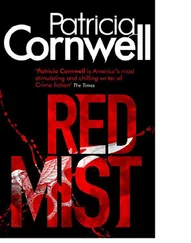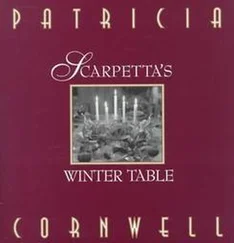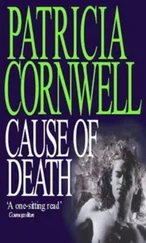It was the sharks the Bureau wanted, and Benton was sure he knew what type and family of sharks. French sharks. Chandonne sharks. But the question was what names they were calling themselves now and how to find them. Where was Jean-Baptiste Chandonne? He would be the great white shark, the boss, the debauched head of what was left of the prominent crime family. The father, Monsieur Chandonne, was enjoying his retirement years at La Santé maximum-security prison outside Paris. Jean-Baptiste’s brother, the heir apparent, was dead. Jean-Baptiste wasn’t wired for a leadership role, but he was motivated, was fueled by violent fantasies and sexually obsessive thoughts, and he lusted for revenge. He could control himself for a while, keep his true inclinations contained for a discrete period of time before the fragile packaging ruptured, exposing neurons and nerves, a bundle of throbbing impulses capable of murderous lust and rages and cruel games more explosive than anything the bomb techs had ever rendered safe on their range. Jean-Baptiste had to be rendered safe. It had to happen right now.
Benton believed Jean-Baptiste had sent the package bomb. He was behind it. He likely had made it. He may have watched it being delivered last night. Maim Scarpetta physically and mentally. Benton imagined Jean-Baptiste outside their building, somewhere in the dark, watching, waiting for Scarpetta to return home from CNN. Benton imagined her reluctantly walking with Carley Crispin, walking past a homeless man bundled in layers of clothing and a quilt on a bench near Columbus Circle. The mention of the homeless man had bothered Benton the first time Scarpetta had brought it up when they were talking to Lobo inside Marino’s car. A feeling in Benton’s gut, something unsettling. It had continued to disturb him as he’d thought about it more. Whoever was behind the bomb intended it for Scarpetta or for Benton or for both of them and would have found it difficult to resist watching her last night.
Maiming her or maiming Benton. Whoever had been maimed, it may as well have been both of them wounded, ruined, maybe not dead, maybe worse than dead. Jean-Baptiste would have known Benton was in New York, was home last night, waiting for his wife to return from her live appearance on CNN. Jean-Baptiste knew whatever he wanted to know, and he knew what Scarpetta and Benton had together. Jean-Baptiste knew what they had, because he knew what he didn’t have and had never had. No one understood apartness better than Jean-Baptiste, and understanding hellish isolation made him understand its antithesis. Darkness and light. Love and hate. Creation and uncreation. The opposites of all things are intimately related. Benton had to find him. Benton had to stop him.
The surest method was to attack vulnerabilities. Benton’s credo: You’re only as good as the people around you. He kept telling himself, reassuring himself, that Jean-Baptiste had made a mistake. He’d recruited badly, had enlisted small carnivores that were neither strong-minded nor properly programmed and certainly weren’t experienced, and he was going to pay for his snap decisions and sick desires and subjective choices. He would be undone by his unsound mind. Granny and Clyde would bring him down. Jean-Baptiste should never have stooped to what by Chandonne standards was petty crime. He should have avoided people unfit for service, people unstable and driven by their own weaknesses and dysfunctions. Jean-Baptiste should have stayed the hell away from small-time character-disordered criminals and banks.
The pattern was the same in each heist, textbook, as if someone had read the manual. The bank branch had been robbed at least once in the past, in some instances more than once, and had no bulletproof partition, known as a “bandit barrier,” separating the tellers from the public. The robberies always occurred on a Friday between the hours of nine and eleven a.m., when the branch was likely to have the fewest number of customers and the greatest amount of cash. A benign-looking older woman, who until this morning the FBI had known only as Granny, would walk in, looking like a Sunday-school teacher in a frumpy dress and tennis shoes, her head covered by a scarf or a hat. She always wore tinted glasses in old-style frames. Depending on the weather, she might have on a coat and wool gloves. If the robbery occurred when it was warm, she wore a pair of transparent plastic disposable gloves, the type used by people who work in food service, to obviate leaving her fingerprints or DNA.
Granny always carried a tote deposit bag that she would begin to unzip as she approached a teller. She would reach inside the bag and pull out a weapon that forensic image enhancement indicated was the same type used each time, a nine-millimeter short-barrel pistol, a toy. The orange tip required by federal law on the barrels of realistic play guns had been removed. She would slide a note to the teller, the same type of note every time, that read: Empty the drawers in the bag! No dye packs! Or you’re dead! It was written precisely, boldly, on a small piece of paper from a plain white notepad. She’d hold open the deposit bag, and the teller would stuff it full of cash. Granny would zip it up as she hurried outside and got into a car driven by her accomplice, the man the FBI called Clyde. In each instance, the car had been stolen and was found abandoned a short time later in a shopping mall parking lot.
When Benton had first walked into the conference room several hours earlier, he’d instantly recognized Granny and the notes she passed. The handwriting was so perfect it looked like a font. The FBI said it was virtually identical to a typeface called Gotham, the unassuming basic lettering of urban landscapes, the straightforward design commonly seen in signage, the same writing used by whoever had addressed the FedEx envelope that had contained Dodie Hodge’s singing card, and possibly the same writing on the address of the FedEx package that contained the bomb. It was hard to know with exactitude about the latter. According to the flurry of e-mails from Marino, the airbill on the bomb had not survived the water cannon. But maybe it didn’t matter.
Images of Dodie Hodge in various disguises and her handwriting were all over the SAC conference room’s walls, video stills of her in “Aunt Bee” attire, as innocent as Mayberry, walking in and out of banks. Benton would have recognized her anywhere, regardless of her efforts at disguise. She wasn’t going to get rid of her big jowly face and thin lips and bulbous nose and the way her ears stuck out. There was only so much she could do about her matronly body and disproportionately thin legs. In the majority of the robberies she was white. In a few she was black. In a recent one this past October, she was brown. A harmless neighbor, a grandmother, innocent and sweet-looking. In some of the stills she was smiling as she hurried out with at most ten thousand dollars inside her fire-resistant tote deposit bag, a different-colored one each time: red, blue, green, black, all offering adequate protection if her written instructions were ignored and a dye pack exploded, spraying an aerosol of red smoke and dye and possibly tear gas.
It was possible Dodie Hodge never would have come to the attention of anyone and would be robbing banks again, maybe robbing them for a long time, had her partner in crime, whose real name was Jerome Wild, not decided to get a distinctive tattoo on his neck when he was at Camp Pendleton last May right before he went AWOL. The tattoo was one he never successfully covered, didn’t even make an effort, not with a high collar or a bandana or the professional-quality makeup Dodie used, trace residues of it recovered from the getaway cars. Mineral makeup, Marty Lanier had explained. The FBI labs in Quantico had identified boron nitride, zinc oxide, calcium carbonate, kaolin, magnesium, iron oxides, silica, and mica-the additives and pigments used in technically sophisticated eye shadows, lipsticks, foundations, and powders popular with actors and models.
Читать дальше












